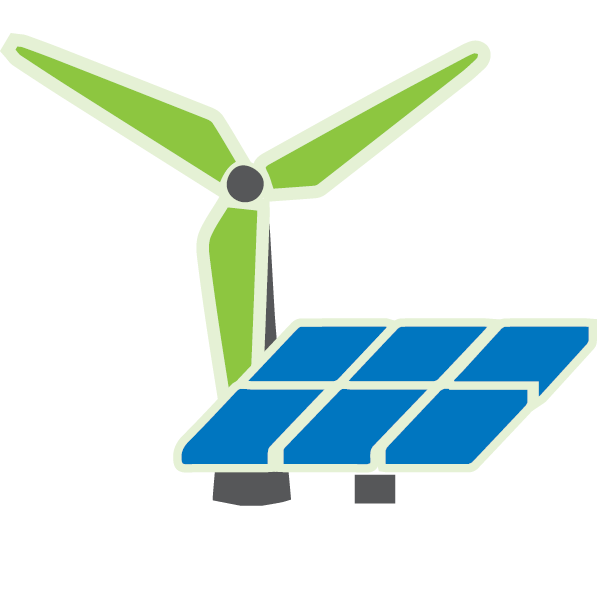
Watershed Health
Healthy watersheds are critically important to the health of our community and its residents. Conservation Authorities take an ecosystem approach to managing the natural resources of a region. We are all connected by watersheds, and how we manage our land uses is reflected in the quality of our water.
The Essex Region is surrounded by Lake Erie, the Detroit River and Lake St. Clair. ERCA’s water quality program includes monitoring a variety of surface water and groundwater sites and interpreting the data collected to determine the health of the watershed. The ERCA water quality program strives to improve our understanding of potential land use impacts and prioritize areas for restoration improvements. It also helps us to track the success of habitat enhancement and best management practices along watercourses. Every five years, ERCA produces a Water Quality Report Card to help provide information on the health of our watersheds.
Water Quality
Wilder
While climate change may not increase the overall number of storms, there will be a rise in the number of intense storms. Extreme weather is costly. Storm cleanup costs, insurance rates, and business disruption are expected to increase with the wilder weather.
Total annual precipitation will increase but not necessarily in all seasons. In the winter and spring, rain is expected to fall faster and shorter storms will have an increasingly high intensity. In other words, heavy rain is likely to get heavier. And return periods of heavy storms will shorten, meaning increased frequency.
Wetter
Annual mean temperatures are increasing across all seasons. By 2050, we could see upwards of 60 days a year above 30°C, leading to extended heat warnings during the summer. There will also be more frost-free days and fewer freeze/thaw cycles. Warmer temperatures will mean disappearing ice on Lake Erie in the winter and droughts in the summer.
Warmer
Climate Change's Primary Impacts: Warmer, Wetter, Wilder
Source water is the water that Water Treatment Plants use to supply us with safe, clean drinking water. In the Essex Region, our municipal drinking water comes from Lake Erie, Lake St . Clair and the Detroit River. There are eight municipal Water Treatment Plants (WTPs) that serve over 95% of the population in the Essex region.
Source Water Protection

Wildlife in the Essex region are among the rarest and most biodiverse in Canada. There are more than 500 plant and animal Species at Risk (SAR) in Canada. In the Essex region, more than 240 federally or provincially rare species of plants or animals have been recorded. Habitat loss and degradation, invasive species and a changing climate can all impact Species at Risk. ERCA’s watershed management programs ensure that new development does not negatively impact species at risk. As well, ERCA’s habitat restoration programs help to protect and provide habitat. In many cases, there are grants available to help implement these programs on your properties.
You can learn more about Species at Risk here in Ontario and in Canada and the latest publications and news from Environment and Climate Change Canada.
Wildlife
Nestbox Plans
Nest box plans for Eastern Bluebirds, Wood Ducks, Kestrels, Screech Owls, Purple Martins, and Bats are available from the ERCA office.

The Essex region is home to exceptional wildlife spectacles that include: the spring bird migration through Point Pelee National Park and Hillman Marsh Conservation Areas, the endangered herptiles (reptiles and amphibians) of Pelee Island, the fall raptor migration through Holiday Beach, Ontario’s largest heronries (heron nesting grounds) located on the islands of Lake Erie, and the fall gatherings of butterflies. ERCA’s wide variety of conservation programs help protect and provide habitat for these species.
Wildlife Damage Control
Occasionally, wildlife activity may cause damage to personal property. Ontario Ministry of Natural Resources and Forestry provides information on how you can avoid conflicts with wild animals, from Canada geese to coyotes.
Environment and Climate Change Canada also provides information regarding managing conflicts with nuisance wildlife (Canada Geese and Mute Swans).
The Internet Center for Wildlife Damage Management has published an authoritative manual describing wildlife behaviour and techniques for preventing and controlling wildlife damage.
Climate Change's Secondary Impacts
Climate change will bring both opportunities and challenges for farmers in the Essex Region. Longer growing seasons will likely improve crop yields. However, severe weather, summer droughts, new crop pests, and spring flooding will present significant challenges for all farmers.
While climate change may not increase the overall number of storms, there will be a rise in the number of intense storms. Extreme weather is costly. Storm cleanup costs, insurance rates, and business disruption are expected to increase with the wilder weather.
Prolonged extreme heat can impact air quality, water quality and facilitate the spread of foodborne illnesses and vector-borne diseases, like Lyme disease. Along with the physical impacts and safety concerns around increased flooding and high temperatures, the mental health effects of a changing climate are becoming increasingly apparent.
From roads to bridges to sewers to power lines, extreme weather can overwhelm and damage critical infrastructure. Warmer temperatures will increase energy demands during the summer months and more intense precipitation events could cause an increase in basement flooding and sewage overflows.
Over 80% of our shoreline is developed and there are thousands of flood-vulnerable structures located in the flood plains. Most floodplain mapping in Ontario is out of date (on average 30 years) or is not available. With a changing climate, ERCA can no longer rely on decades-old data and assumptions about rainfall and storm surge.Water levels in the Great Lakes are mainly driven by precipitation, runoff, and evaporation. Modeling and future predictions are uncertain, however, evidence indicates increasing variability in lake level fluctuations. Prolonged periods of extreme high or low lake levels can impact shorelines, the shipping industry, coastal wetlands, and tourism and recreation. In the future, less ice cover and fluctuating water levels may lead to increased erosion and an increased risk of lake and riverine flooding.
Our region’s watersheds score an average of D- in ERCA’s annual watershed report cards. Increasing precipitation and stronger storms will amplify the risk of erosion and sewage overflows. Warmer water temperatures and higher nutrient loading from additional runoff will contribute to more harmful algal blooms in the western basin of Lake Erie.
Every choice we make has an impact, and there are many ways in which you can make a difference, at home, in your community, and your region.
Making a Climate Difference

Increasing forest cover is one of the most effective things we can do to combat climate change.
Plant Trees.

Adjust your thermostat seasonally, and take advantage of home retrofit programs.
Conserve Home Energy.

Use and invest in renewable energy when possible.
Rethink home energy.

Complete an Energy Plan and an Energy and Greenhouse Gas Emissions Inventory, which also includes targets and action plans.
For Businesses and Municipalities:

Reduce your energy, plastic, water, and other resource use.
Consume and Use Less Everything.

Drive and fly less whenever possible.
Reconsider Transportation.

Eat less meat, eat local, reduce food waste, backyard compost.
Eat for a Climate-Stable Planet.

Prepare your family and home for a changing climate
Be perpared.
The Great Lakes Water Quality Agreement named the Leamington Tributaries as a priority watershed for phosphorus load reduction to mitigate Harmful Algal Blooms in Lake Erie. These tributaries are actually several relatively small, hydrologically distinct watersheds that lie mostly in the municipalities of Leamington and Kingsville, and they are heavily influenced by greenhouse agriculture. In 2012, the Essex Region Conservation Authority began monitoring these watersheds biweekly year-round and in 2016 began event sampling with ISCO autosamplers in three watersheds. Now, with a decade of data, we have explored long term trends and comparisons in nutrient concentration and load between greenhouse and non-greenhouse influenced streams. The report below shows that greenhouse influenced streams continue to have higher concentrations than non-greenhouse influenced streams, that the timing of the highest concentrations is indicative of point source pollution, and that even newly built greenhouses are contributing to downstream water quality degradation. Further action is needed to determine the means by which nutrients are escaping from what should be closed-loop operations. For further information on this project, please contact ERCA’s Water Quality Scientist.
Kingsville Leamington Nutrient Project
Algal blooms, nutrient runoff and pollution have been in an issue in the Lake Erie watershed for decades. Harmful algal blooms (HABs) have become an annual occurrence in Western Lake Erie and Southern Lake St. Clair, affecting drinking water sources, tourism, recreation, and fisheries, with a direct economic impact in the Essex Region. The increase in frequency and severity of HABs in recent years is attributed to many different factors, including climate change, invasive species, loss of wetlands and nutrient loading from surrounding tributaries and runoff.
As part of international efforts to address HABs, the Canadian and Ontario governments released a joint Lake Erie Action Plan (LEAP) in 2018 to meet binational 40% phosphorus load reduction targets. The LEAP identifies conservation authorities as key partners in its framework, leading to the creation of the Essex Region Phosphorus Management Plan (PMP) and its coordination by the Essex Region Conservation Authority (ERCA). The PMP describes the status of phosphorus concentrations in local waterbodies, identifies sources of phosphorus in the Essex Region as well as knowledge gaps, and reduction strategies. The PMP includes a list of Action Items that were developed during the writing of this document. The intent is for this list of Action Items to be a living document, updated as actions are completed and/or new actions identified.
Essex Region Phosphorus Management Plan (PMP)
Situated in the heart of the Great Lakes Basin, the Detroit River connects Lake St. Clair and the City of Windsor with Lake Erie and the Town of Amherstburg. This 51 kilometre waterway is the busiest international border crossing point between Canada and the United States and is a key transportation route in the Great Lakes system. The river is truly a shared resource bringing the people of two nations together. The Detroit River is also the only Canadian river and watershed that lies completely within the Carolinian vegetation zone, featuring diverse ecosystems and rare species found nowhere else in this country. In addition, over 6,000 years of First Nation use and 300 years of European settlement have endowed the Detroit River with many exceptional cultural heritage values.
Since 1989, the Detroit River Canadian Cleanup Committee has been working to improve the health of the Detroit River by implementing its Remedial Action Plan.
In 2001, the Detroit River was designated as part of the Canadian Heritage Rivers System, becoming the first river on the continent to receive both Canadian and American heritage river status.
Detroit River



